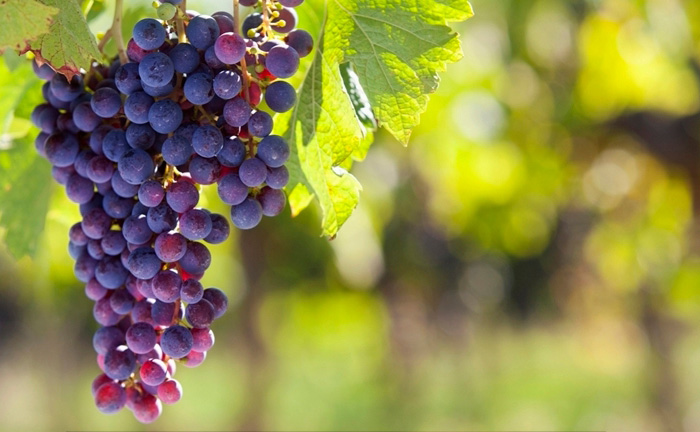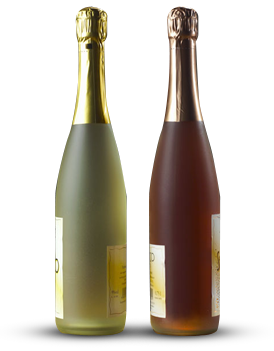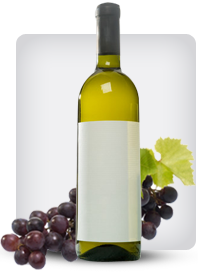

Category: Malbec Wine
Best Vintages for Argentine Malbec: A Guide to Exceptional Years Argentine Malbec has risen from a humble blending grape to a world-renowned icon, celebrated for its deep color, plush texture, and flavors of dark fruit and velvety tannins
Posted onWhile modern viticulture and winemaking ensure remarkable consistency year after year, certain vintages stand out as truly exceptional, offering wines with extraordinary concentration, balance, and aging potential. Understanding these standout years can elevate your tasting experience and inform your collecting strategy.
The key to Argentina’s vintage variation lies primarily in the high-altitude vineyards of Mendoza, particularly in sub-regions like the Uco Valley (Valle de Uco), Luján de Cuyo, and Maipú. The climate is continental and arid, making the timing and amount of snowfall in the Andes (the primary irrigation source) and the temperature patterns during the growing season the critical factors.
What Defines a Great Vintage?
A great vintage for Argentine Malbec typically features:
* A cool, dry growing season with significant diurnal temperature shifts (hot days, cold nights).
* A lack of significant heat spikes during the ripening period, which preserves acidity and prevents over-ripeness.
* A longer hang time, allowing for full phenolic ripeness (tannins, color, flavor) while maintaining freshness.
Standout Vintages of the Last Decade
* 2016: Universally hailed as a classic, perhaps the vintage of the century so far. A cool, long growing season produced Malbecs with stunning aromatic complexity, vibrant acidity, refined tannins, and a perfect balance between power and elegance. These are wines built for the long haul.
* 2019: An excellent vintage that followed a cooler-than-average season. The wines are aromatic, fresh, and beautifully structured, with a purity of fruit and silky textures. They are approachable now but have the backbone to age gracefully.
* 2020: Despite global challenges, the vintage conditions were outstanding. A dry, cool year resulted in lower yields but exceptionally concentrated wines with deep color, intense flavor, and remarkable freshness. Early indications suggest this is a top-tier vintage.
* 2021: Another cooler vintage, producing elegant, lower-alcohol Malbecs with bright acidity and pronounced floral and red fruit characteristics. These wines offer a different, more refined expression of Malbec.
Other Notable Vintages to Seek Out
* 2013: A cooler year that yielded elegant, age-worthy wines, often with a more European sensibility.
* 2017: A warmer vintage, producing ripe, powerful, and opulent wines that are generous and forward. Ideal for those who enjoy a richer style.
* 2018: A very good vintage with a warm, dry summer. The wines are ripe and concentrated but balanced, offering excellent quality across the board.
Vintage Considerations by Sub-Region
It’s important to note that microclimates can vary:
* Uco Valley (e.g., Paraje Altamira, Gualtallary, Los Chacayes): At the highest elevations, this region often excels in cooler vintages (like 2016, 2019, 2021), which highlight its natural acidity and mineral tension.
* Luján de Cuyo (e.g., Perdriel, Agrelo): Known for more structured, powerful Malbecs, this area can shine in both cool and moderately warm years, producing wines with great depth.
Practical Advice for Wine Lovers
For immediate enjoyment, look for the elegant and approachable wines of 2021 or the ripe, generous bottles from 2017 and 2018.
The legendary 2016 vintage is a must-have for any cellar. 2019 and the promising 2020 also offer superb aging potential.
Excellent vintages raise the tide for all boats. Even entry-level Malbecs from years like 2016, 2019, or 2020 will over-deliver on quality.
Conclusion
While Argentine Malbec is reliably delicious in nearly any year, seeking out the standout vintages—particularly 2016, 2019, 2020, and 2021—offers a chance to experience the variety at its most profound and complex. These wines capture the perfect alignment of climate and terroir, resulting in bottles that not only define the potential of Argentine Malbec but also provide unforgettable drinking pleasure for years to come. As always, the best vintage is the one shared with good company, but a little knowledge of the year on the label can make that moment even more special.
Organic Malbec Wines with Low Sulfites: A Guide to Purity and Flavor
Posted onIntroduction
Malbec, the bold and velvety red wine originally from France but now famously associated with Argentina, has captured the hearts of wine enthusiasts worldwide. In recent years, a growing segment of consumers has begun seeking out wines that align with a more natural and health-conscious lifestyle. This has led to increased interest in organic Malbec wines with low sulfites—options that promise both environmental responsibility and a potentially cleaner tasting experience. This article explores what makes these wines special, their benefits, and what to look for when selecting a bottle.
Understanding the Terms:
Organic and Low Sulfite
What Does “Organic” Mean in Winemaking?
Organic wine production starts in the vineyard. For a wine to be certified organic (standards vary by country), the grapes must be grown without the use of synthetic pesticides, herbicides, or fertilizers. The focus is on biodiversity, soil health, and natural processes. In the cellar, organic certification often limits the types and amounts of additives, including sulfites.
The Role of Sulfites
Sulfites (sulfur dioxide) are a common preservative used in winemaking for centuries. They prevent oxidation and microbial spoilage, helping wine remain stable and fresh during its journey from the winery to your glass. However, some individuals are sensitive to sulfites, reporting headaches or allergic reactions, though this is relatively rare. More commonly, consumers simply prefer to minimize additives in their food and drink.
“Low sulfite” wines contain significantly less sulfur dioxide than conventional wines. “No-added-sulfite” wines exist but are less stable and have a shorter shelf life.
Why Choose an Organic, Low-Sulfite Malbec?
Proponents believe that with fewer chemical interventions in the vineyard and cellar, the wine more authentically expresses its *terroir*—the unique combination of soil, climate, and place. An organic, low-sulfite Malbec may offer a clearer, more vibrant taste of the Argentine Andes or the Cahors region of France.
Choosing organic supports farming practices that promote soil vitality, water conservation, and ecosystem health.
While not a guarantee, individuals who suspect sulfite sensitivity may find these wines more agreeable.
With less sulfur to mask nuances, the natural fruit character of the Malbec grape—notes of dark plum, blackberry, and violet—can feel more immediate and vibrant.
What to Expect When Tasting
Don’t expect these wines to taste identical to their conventional counterparts. They are a different expression of the grape. They might be:
* Slightly more vibrant in color when young.
* More expressive of primary fruit and earthy, mineral notes.
* Potentially less predictable from bottle to bottle, as they are more “alive” and less controlled.
* Best consumed relatively young to enjoy their fresh fruit profile.
How to Find and Select Them
Trusted labels include USDA Organic (USA), EU Organic Leaf (Europe), and various national biodynamic certifications (like Demeter). “Made with Organic Grapes” means the fruit is organic, but winemaking standards may be slightly more flexible.
Many producers who focus on low-sulfite winemaking will proudly state “Minimal Sulfites Added” or “Low SO₂.”
Retailers and restaurants specializing in natural, organic, or biodynamic wines are excellent sources for curated selections.
Some renowned Argentine Malbec producers are leading the charge in organic and low-intervention practices. Look for names like Domaine Bousquet, Alta Vista, Zuccardi (with specific organic lines), and Clos de los Siete (which includes organic estates).
A Few Recommendations to Try
* Domaine Bousquet Alma Libre Malbec: From a pioneer of organic viticulture in Mendoza’s Uco Valley, this is a pure, unoaked expression with bright fruit and minimal added sulfites.
* Alta Vista Organic Malbec: A classic, approachable Malbec from certified organic vineyards, offering ripe dark fruit in a smooth, easy-drinking style.
* Famille Perrin Malbec (Cahors): From the renowned organic pioneers of the Rhône, this French Malbec from Cahors is structured, earthy, and made with organic principles.
Conclusion
Organic Malbec wines with low sulfites represent a fascinating and rewarding corner of the wine world. They appeal not only to the environmentally conscious and health-aware drinker but also to the curious enthusiast eager to experience Malbec in its most unadulterated form. While they may require a bit more seeking out, the discovery of a vibrant, pure, and thoughtfully made bottle offers a unique and satisfying connection to the land and the artisan winemaker. As with any wine, the best approach is to explore, taste, and find the producers whose philosophy and style resonate with your own palate.
The year 2025 marks a significant milestone for the world of wine, particularly for the growing community of conscious consumers. The demand for vegan-friendly options has moved from a niche request to a central consideration for winemakers and sommeliers alike. Among the robust and beloved reds, Malbec—a varietal synonymous with the sun-drenched vineyards of Argentina—is leading the charge. This guide explores the best vegan Malbec options for 2025, highlighting the producers, regions, and innovations that are making it easier than ever to enjoy a glass with a clear conscience. What Makes a Wine Vegan?
Posted onIt’s a common misconception that all wine is vegan. Traditional winemaking often uses “fining agents” to clarify the liquid and remove harsh tannins. These agents can include animal-derived products like egg whites, casein (a milk protein), isinglass (from fish bladders), or gelatin. Vegan wines, however, utilize mineral-based or plant-based fining agents such as bentonite clay, activated charcoal, or pea protein. The result is a wine that achieves its clarity and structure without the use of any animal products.
Top Vegan Malbec Picks for 2025
1. Domaine Bousquet “Alta” Organic Malbec (Tupungato, Uco Valley)
A pioneer in organic and vegan viticulture, Domaine Bousquet continues to set the standard. Their 2025 “Alta” Malbec is a benchmark for quality and ethics. Grown at high altitudes in the Uco Valley, this wine offers intense aromas of blackberry and plum, with elegant notes of violet and a touch of dark chocolate. Its structure is refined using plant-based fining, resulting in a smooth, complex finish that is both powerful and polished.
2. Zorzal “Eggo” Franco Malbec (Tupungato, Uco Valley)
Zorzal Winery is renowned for its minimalist, terroir-driven approach. Their “Eggo” Franco is a standout, made from ungrafted vines and fermented with native yeasts. For 2025, they have reaffirmed their commitment to vegan production. This wine is unfined and unfiltered, presenting a pure, unadulterated expression of Malbec. Expect a vibrant, juicy palate with wild red fruit character, earthy undertones, and a strikingly fresh acidity.
3. Bodega Tapiz “Black Tears” Single Vineyard Malbec (Mendoza)
Bodega Tapiz combines modern technology with sustainable practices. Their “Black Tears” Malbec, a perennial favorite, is now officially certified vegan for its 2025 vintage. Sourced from a single vineyard in the foothills of the Andes, this wine is dense and concentrated, with layers of black cherry, spice, and a hint of smokiness. It’s a bold, opulent choice that demonstrates vegan wines can deliver profound depth and aging potential.
4. Amalaya “Vegan Seal” Malbec (Salta)
From the high-altitude, arid region of Salta comes Amalaya’s specially marked vegan Malbec. The 2025 vintage benefits from the intense solar radiation and cool nights, creating a wine with remarkable color and aromatic intensity. It’s a fruit-forward expression, bursting with ripe raspberry and blueberry, balanced by soft tannins and a clean, mineral-driven finish. Its accessible price point makes it an excellent everyday vegan option.
The 2025 Landscape: Trends and Innovations
The vegan wine movement is no longer just about the fining process. In 2025, we see a holistic integration of vegan principles with broader sustainability goals.
- Regenerative Organic Certification: More vegan Malbec producers are pursuing this rigorous standard, which encompasses soil health, animal welfare, and social fairness.
- No-Addition Winemaking: The “nothing added, nothing taken away” philosophy naturally aligns with veganism. These wines are often unfined, offering a truly pure product.
- Clearer Labeling: Wineries are making it simpler for consumers by prominently displaying “Vegan” on the label or capsule, often accompanied by a recognizable logo.
How to Identify a Vegan Malbec
When shopping for a vegan Malbec in 2025, look for:
- Official Vegan Certification: Logos from The Vegan Society, V-Label, or other accredited organizations.
- Winery Websites & Tech Sheets: Reputable producers provide detailed production information online.
- Specialist Retailers & Apps: Many online wine merchants and apps like Barnivore now have dedicated vegan filters, making the search effortless.
The world of vegan Malbec in 2025 is vibrant, diverse, and more accessible than ever. It proves that ethical consumption does not require a compromise on quality, complexity, or pleasure. Whether you are a long-time vegan or simply a curious oenophile, these wines offer a delicious opportunity to explore the rich, dark depths of Malbec with a clear and conscientious palate.
Malbec Wine Subscription Box Reviews: The Best Options for Wine Lovers
Posted onIf you’re a fan of bold, rich red wines, a Malbec wine subscription box could be the perfect way to explore new bottles from Argentina, France, and beyond. These curated services deliver premium Malbecs straight to your door, often with tasting notes, food pairing suggestions, and exclusive discounts.
To help you choose the best subscription, we’ve reviewed some of the top Malbec wine clubs available today.
Top Malbec Wine Subscription Boxes
1. Winc
Best for Customization
Winc stands out for its personalized wine selection process. After a short quiz, their algorithm recommends wines tailored to your taste—including excellent Malbec options.
Pros:
✔ Flexible subscription (skip or cancel anytime)
✔ Affordable pricing (starting at per bottle)
✔ High-quality, small-batch wines
Cons:
✖ Limited international Malbec selections
2. Vinebox
Best for Sampling Different Malbecs
Vinebox offers a unique approach with single-serve wine vials, allowing you to taste multiple Malbecs before committing to a full bottle.
Pros:
✔ Great for trying premium Malbecs without buying whole bottles
✔ Beautiful packaging and detailed tasting guides
Cons:
✖ Higher cost per serving compared to full bottles
3. The California Wine Club
Best for Premium Malbecs
While known for California wines, this club also features Argentine Malbecs from boutique wineries.
Pros:
✔ Hand-selected, high-quality wines
✔ Access to rare, small-production Malbecs
Cons:
✖ Pricier than other options
4. Tasting Room by Winestyr
Best for Wine Education
This club focuses on educating subscribers about wine regions, including Mendoza (Argentina’s Malbec heartland).
Pros:
✔ Expert-curated selections with detailed notes
✔ Direct support for independent winemakers
Cons:
✖ Limited flexibility in subscription frequency
How to Choose the Best Malbec Subscription
When selecting a Malbec wine club, consider:
(some clubs offer premium bottles at higher prices)
(monthly vs. quarterly shipments)
(Argentine vs. French Malbecs)
Final Verdict
For customization, Winc is a great choice. If you want to sample before buying, Vinebox excels. For premium Malbecs, The California Wine Club is ideal.
Whichever you choose, a Malbec subscription box is a fantastic way to deepen your appreciation for this bold, flavorful wine. Cheers! 🍷
—
Would you like recommendations based on a specific budget or tasting preference? Let us know in the comments!
Small Producers Making Exceptional Malbec
Posted onMalbec, once a hidden gem of Argentina, has now become a globally celebrated wine. While large wineries dominate the market, a growing number of small producers are crafting exceptional Malbecs that showcase terroir, tradition, and innovation. These boutique winemakers are redefining what Malbec can be—delivering depth, elegance, and unique character in every bottle.
The Rise of Boutique Malbec
Historically, Malbec was Argentina’s workhorse grape, often used in high-volume blends. However, in recent years, small-scale producers have shifted focus toward quality over quantity. By carefully managing yields, hand-harvesting grapes, and employing traditional techniques, these artisans create wines with remarkable complexity and expression.
What Sets Small-Producer Malbec Apart?
- Terroir-Driven Wines: Small producers often work with single vineyards, allowing the unique characteristics of the soil and microclimate to shine.
- Handcrafted Techniques: Many eschew industrial methods in favor of manual sorting, native yeast fermentation, and extended aging in high-quality oak.
- Sustainable Practices: A growing number of boutique wineries embrace organic and biodynamic farming, prioritizing environmental stewardship.
Notable Small Producers to Explore
Here are a few standout wineries that are elevating Malbec to new heights:
- Altos Las Hormigas: Known for their minimal-intervention approach, producing Malbecs with purity and finesse.
- Zorzal Wines: A leader in high-altitude Malbec, crafting vibrant and structured wines from the Uco Valley.
- Bodega Chacra: Though famous for Pinot Noir, their Malbec project showcases elegance and balance.
The Future of Malbec
As consumers increasingly seek authenticity and craftsmanship, small producers are gaining recognition for their dedication to quality. Their wines tell a story—of the land, the people, and the passion behind each bottle. For wine lovers looking beyond mass-produced labels, these boutique Malbecs offer an unforgettable experience.
Whether you’re a seasoned collector or a curious newcomer, exploring small-producer Malbec is a journey worth taking.
popular posts
-

Zinfandel vs
12-16 2025Primitivo: A Tale of Two Grapes For wine enthusiasts exploring the rich world of red varietals, the relationship between Zinfandel and Primitivo presents a Read More
-

Vegan-Friendly Shiraz: A Guide to Enjoying This Bold Red Wine For wine enthusiasts following a vegan lifestyle, navigating the world of red wines can sometimes be a challenge
12-15 2025Shiraz, known for its bold, spicy, and full-bodied character, is a favorite among red wine drinkers. The good news? Many Shiraz options are naturally Read More

